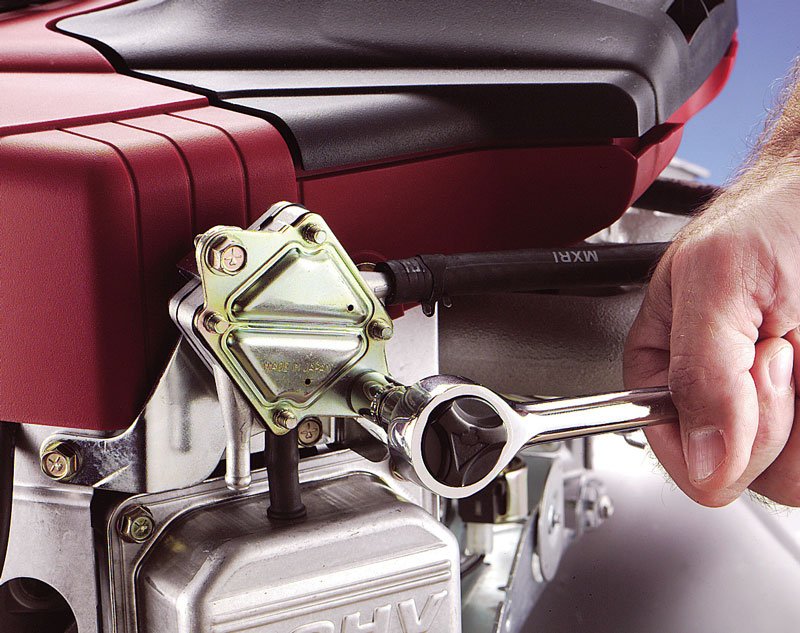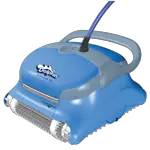Briggs & Stratton Fuel Pump Troubleshooting: Expert Guide
Dealing with a faulty Briggs & Stratton fuel pump can be frustrating. It can lead to starting issues and poor engine performance.
In this guide, we will explore the common problems associated with Briggs & Stratton fuel pumps and offer practical troubleshooting tips. Understanding these issues can help you maintain your engine’s reliability and performance. Whether you are a seasoned mechanic or a DIY enthusiast, this post will provide you with the necessary insights to diagnose and fix fuel pump problems.
Keep reading to learn how to identify and resolve common fuel pump issues effectively.

Credit: www.youtube.com
Introduction To Briggs & Stratton Fuel Pumps
Briggs & Stratton fuel pumps are vital components in small engines. They ensure the proper flow of fuel from the tank to the engine. These pumps help maintain consistent engine performance. Understanding their function is crucial for troubleshooting issues.
Importance Of Fuel Pumps
Fuel pumps play a key role in engine operation. They deliver fuel at the right pressure. This ensures smooth engine function. Without a working fuel pump, engines may sputter or fail to start. Proper maintenance of the fuel pump is essential. It helps in avoiding unexpected breakdowns.
Common Issues
Several issues can affect Briggs & Stratton fuel pumps. A common problem is a clogged fuel filter. This restricts fuel flow. Another issue is a leaky pump diaphragm. This causes fuel leaks and reduced pressure. Sometimes, the pump may fail due to wear and tear. Regular inspection can help identify these problems early. Replacing faulty parts ensures the pump runs smoothly.
Identifying Symptoms Of Fuel Pump Problems
Having trouble with your Briggs & Stratton engine? The fuel pump may be the culprit. Identifying symptoms of fuel pump problems can save time and money. Here are some common signs to watch out for:
Engine Sputtering
One of the first signs of a failing fuel pump is engine sputtering. The engine may run fine at low speeds. But as you accelerate, it starts to sputter. This often means the engine is not getting enough fuel.
If you notice this happening, it’s a good idea to check the fuel pump. It could be clogged or malfunctioning. A quick inspection might reveal the issue.
Difficulty Starting
Another common symptom is difficulty starting the engine. If the fuel pump is not working correctly, the engine may struggle to start. You may hear the starter motor cranking, but the engine fails to ignite.
This can be frustrating. Especially if it happens often. Checking the fuel pump can help determine if it needs replacement. Sometimes, it could be a simple fix like cleaning the pump.
| Symptom | Possible Cause |
|---|---|
| Engine Sputtering | Clogged or malfunctioning fuel pump |
| Difficulty Starting | Faulty fuel pump |
Understanding these symptoms can help you identify fuel pump problems early. This way, you can take action before it leads to more serious issues.
Tools Needed For Troubleshooting
When facing issues with your Briggs & Stratton fuel pump, having the right tools is crucial. Proper tools ensure accurate diagnosis and successful troubleshooting. This guide will help you gather everything needed to fix common problems.
Basic Tools
Start with the basic tools. These are essential for any troubleshooting task:
- Screwdrivers: Both flathead and Phillips.
- Wrenches: A set of both standard and metric sizes.
- Pliers: Needle nose pliers for small parts.
- Socket Set: Various sizes to fit different bolts.
- Rags: Clean up fuel spills and dirt.
Specialized Equipment
Some issues require specialized equipment. These tools help in detailed troubleshooting:
| Tool | Purpose |
|---|---|
| Fuel Pressure Gauge | Check the pressure in the fuel line. |
| Multimeter | Measure electrical output and continuity. |
| Vacuum Tester | Test for leaks in the fuel pump. |
| Carburetor Cleaner | Clean fuel pump parts. |
Having these tools on hand makes the troubleshooting process smoother. Accurate diagnosis is easier with the right equipment.

Credit: www.briggsandstratton.com
Initial Checks And Inspections
Experiencing issues with your Briggs & Stratton fuel pump can be frustrating. Performing initial checks and inspections can help you identify and fix the problem. This section will guide you through essential steps to troubleshoot your fuel pump.
Visual Inspection
Start with a thorough visual inspection of the fuel pump. Look for any obvious signs of damage or wear. Check for cracks, leaks, or loose connections. Ensure all components are in place and nothing is missing.
Fuel Line Examination
Next, examine the fuel lines. Make sure they are free from blockages or kinks. Check for any signs of wear or damage. Ensure the lines are properly connected and secure.
Testing The Fuel Pump
Testing the fuel pump in your Briggs & Stratton engine is crucial. It helps ensure your engine runs smoothly. There are two main tests: pressure testing and flow testing. Both tests can help diagnose issues with your fuel pump. Follow these steps to perform each test effectively.
Pressure Testing
Pressure testing checks the fuel pump’s ability to create the right pressure. Start by connecting a pressure gauge to the fuel line. Turn on the engine and observe the gauge. The reading should match the manufacturer’s specifications. If the pressure is too low, there might be a blockage. If it’s too high, the pump could be faulty.
Flow Testing
Flow testing measures the fuel pump’s ability to deliver fuel. Begin by disconnecting the fuel line from the carburetor. Place the end of the fuel line in a container. Start the engine and let it run for a few seconds. The fuel should flow steadily into the container. If the flow is weak, check for clogs or a worn-out pump.
Cleaning And Maintaining Fuel Pumps
Fuel pumps are critical for the smooth operation of your Briggs & Stratton engine. Keeping them clean and well-maintained ensures your equipment runs efficiently. Learn how to clean and maintain your fuel pump with these easy steps.
Cleaning Procedures
Start by disconnecting the fuel lines from the pump. Use a clean cloth to wipe off any dirt or debris. Remove the pump from the engine. Open the pump carefully to access the internal parts. Use a brush and clean fuel to remove any buildup inside. Rinse each part thoroughly and let them dry. Reassemble the pump and reconnect the fuel lines.
Regular Maintenance Tips
Inspect the fuel pump regularly for signs of wear or damage. Replace any damaged parts immediately. Check the fuel lines for cracks or leaks. Clean the fuel filter every few months to prevent clogs. Ensure the fuel tank is free from debris and water. Use fresh fuel to prevent contamination and buildup.
Replacing A Faulty Fuel Pump
Replacing a faulty fuel pump in your Briggs & Stratton engine is crucial. A malfunctioning pump can cause your engine to stutter or fail. Follow these steps to ensure a smooth replacement process. This guide will help you remove the old pump and install a new one efficiently.
Removal Process
First, locate the fuel pump on your Briggs & Stratton engine. It is usually near the carburetor. Ensure the engine is off and cool before starting. Disconnect the fuel lines from the pump. Use pliers to remove the hose clamps if needed. Take note of the connections for reassembly.
Next, remove the mounting bolts holding the pump in place. Carefully detach the pump from the engine. Dispose of the faulty pump responsibly. Clean the area around the pump mounting point. This ensures a secure fit for the new pump.
Installing A New Pump
Start by aligning the new fuel pump with the mounting holes. Secure it with the bolts you removed earlier. Tighten the bolts firmly but avoid over-tightening. Reconnect the fuel lines to the new pump. Make sure each connection is tight and secure.
Check for any fuel leaks before starting the engine. Prime the fuel system if necessary. Start the engine and let it run for a few minutes. Ensure the new pump is working correctly. Your engine should now run smoothly.
Credit: www.techsupportforum.com
Preventative Measures
Proper maintenance of your Briggs & Stratton fuel pump is crucial. Regular upkeep ensures your engine runs smoothly. This section covers essential preventative measures for optimal performance.
Using Quality Fuel
Always use high-quality fuel. Cheap fuel can clog your system. Look for fuel with a higher octane rating. This helps your engine run cleaner and more efficiently.
Consider using fuel additives. They help in keeping the fuel lines clean. They also prevent fuel from breaking down over time.
Regular System Checks
Perform regular system checks on your fuel pump. Inspect hoses and connections. Look for any signs of wear or leaks.
Check the fuel filter. Replace it if it looks dirty. A clean filter ensures a smooth fuel flow.
Create a maintenance schedule. Stick to it. Regular checks can prevent major issues.
When To Seek Professional Help
Troubleshooting a Briggs & Stratton fuel pump can be tricky. Sometimes, the problem is more than a DIY fix. Knowing when to seek professional help ensures your engine runs smoothly. Here, we discuss signs that indicate it’s time to call a professional.
Recognizing Complex Issues
Certain fuel pump problems are too complex for a quick fix. If the engine stalls frequently or fails to start, you might need expert help. Unusual noises or persistent leaks also signal serious issues.
Below are some common complex issues:
- Frequent Stalling: The engine stops running often.
- Starting Problems: The engine won’t start at all.
- Unusual Noises: Strange sounds from the fuel pump.
- Persistent Leaks: Fuel leaking continuously.
Finding A Qualified Technician
When facing complex issues, find a qualified technician. Look for professionals who specialize in Briggs & Stratton engines. Certified technicians have the skills to diagnose and fix fuel pump problems.
Follow these steps to find a qualified technician:
- Check Certifications: Ensure they are certified by Briggs & Stratton.
- Read Reviews: Look for positive feedback from previous customers.
- Ask for Recommendations: Get referrals from friends or family.
- Compare Costs: Get quotes from multiple technicians.
By recognizing complex issues and finding a qualified technician, you can keep your Briggs & Stratton engine running smoothly. Always seek professional help when needed to avoid bigger problems down the line.
Frequently Asked Questions
How Do I Know If My Briggs & Stratton Fuel Pump Is Bad?
If your engine won’t start or runs rough, the pump may be faulty.
What Are Common Symptoms Of A Bad Fuel Pump?
Common signs include engine stalling, sputtering, or not starting at all.
Can A Clogged Fuel Filter Affect The Fuel Pump?
Yes. A clogged filter can strain the pump and cause it to fail.
How Can I Test My Briggs & Stratton Fuel Pump?
You can test it by checking fuel flow or using a pressure gauge.
How Often Should I Replace My Fuel Pump?
Typically, check the pump every season and replace it if it’s faulty.
Conclusion
Troubleshooting your Briggs & Stratton fuel pump can be simple. Follow the steps mentioned to identify and fix common issues. Regular maintenance helps prevent future problems. Keep your fuel pump clean and check it often. If issues persist, consider professional help.
Maintaining your equipment ensures a longer lifespan. Happy mowing!






